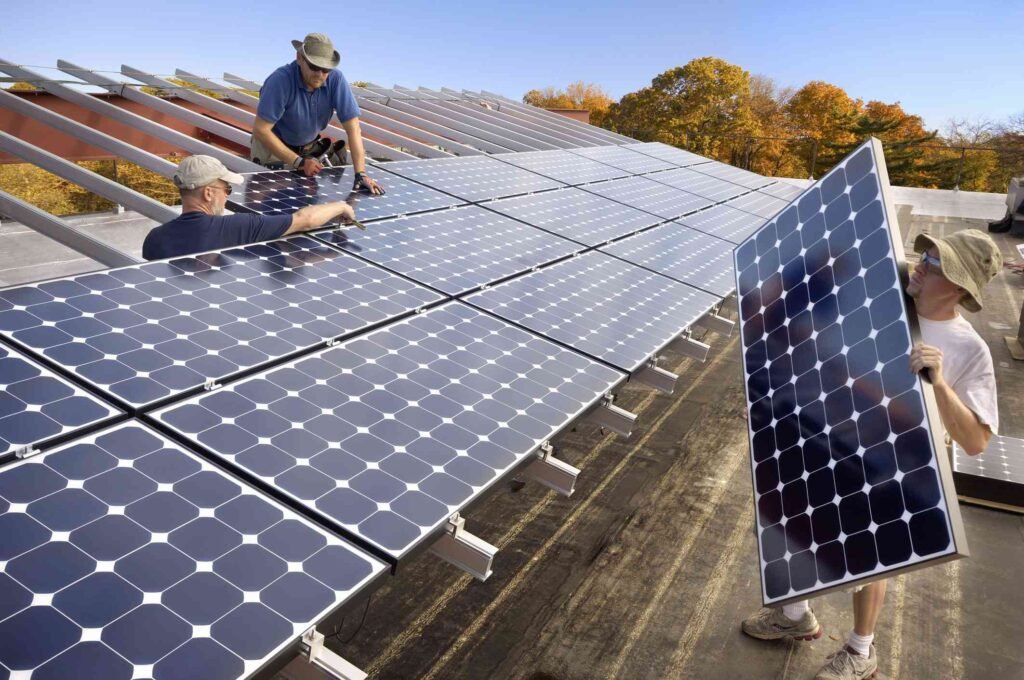So you’re thinking about going green and installing solar panels on your home. We get it – who wouldn’t want to save money on electricity bills and help the environment at the same time? Installing solar panels can seem daunting at first, but it may be easier and more affordable than you think. In this article, we’ll walk you through everything you need to know about adding solar panels to your home. We’ll discuss how they work, types of solar panels, costs and incentives, installation, energy savings, and even increased home value. We’ll also share tips on choosing the right solar company so you can start your solar journey with confidence. Going solar is a smart investment in your home’s future and the planet’s too. Let us shine a light on how to make solar work for you!
Solar Panels Increase Home Value and Provide Tax Incentives
Installing solar panels is one of the best ways to boost your home’s value in today’s market. Studies show homes with solar panels sell for 3-4% more than comparable homes without them. Buyers love energy cost savings and independence from the grid.
Tax Incentives Galore
The federal government and many states offer tax credits for installing residential solar panels. You can claim a federal tax credit equal to 30% of the cost of installing the system. Many states offer additional incentives worth thousands more. These tax credits significantly reduce the overall cost of going solar.
Low Maintenance Required
Solar panels require little maintenance but provide decades of free energy. Most solar panels come with 20-25-year performance warranties and will continue producing energy for up to 40 years. An occasional hosing down to remove dirt and debris is all the maintenance needed in most areas. No moving parts means no expensive repairs or part replacements down the road.
Once your system is installed, you can sit back and start racking up the savings. Reduce or eliminate your electric bill, gain energy independence, and do your part for the environment all at the same time. Not a bad return for such a simple green renovation! Going solar is an investment in your home and the planet that keeps on giving year after year.
How Solar Panels Work and the Different Types Available
Photovoltaic (PV) panels
The most common type, photovoltaic or PV panels, converts sunlight into electricity. They contain solar cells made of silicon semiconductors that absorb the energy from sunlight and convert it into usable electricity. The more sun they get, the more electricity they can produce.
Crystalline silicon panels
These panels, made of silicon crystals, are the most efficient and space-efficient but tend to be the most expensive. Monocrystalline panels are made of a single silicon crystal, while polycrystalline panels are made of multiple small silicon crystals. Both can last 25-30 years.
Thin-film solar panels
Made of amorphous silicon or other materials like cadmium telluride, thin-film panels are lightweight, flexible, and less expensive to produce. However, they are less efficient and require more space. They typically last 15-20 years.
Concentrated solar power
It uses mirrors or lenses to concentrate the sun’s energy and convert it into heat which then produces electricity. This method requires very intense sunlight to be effective but can generate a lot of power. The components typically need to be replaced every 15-25 years.
As solar technology improves, panels are becoming even more efficient and affordable. No matter which type you choose, solar panels can be a smart investment in your home and the planet. By harnessing the sun’s free, abundant energy, you’ll reduce your environmental footprint and utility bills at the same time.
Questions to Ask When Shopping for Solar Panels
When you start looking into solar panels for your home, you’ll have some important questions to consider. The answers will help determine which panels are the best fit for your needs and budget.
How much direct sunlight does your roof get?
The amount of sunlight your roof receives each day will affect how many panels you need and the energy they can produce. Ask about the wattage of different panels to determine how many you need to power your home. More panels mean more energy but also a higher cost.
What are the costs and incentives in your area?
The upfront costs of solar panels can be high, so find out what rebates, tax credits, and other incentives are available where you live. Many utility companies and governments offer programs to encourage solar adoption. Also, ask about financing options that can make panels more affordable.
How long will the panels last?
High-quality solar panels typically last 25-30 years or even longer. Make sure to choose panels with at least a 25-year power warranty. Ask about the panel degradation rate too, which is how much efficiency they lose over time. Most panels lose less than 0.5% each year.
What are the installation and maintenance requirements?
Once you purchase the panels, they need to be installed properly to work well and safely. Ask about the installation process and costs. Also, inquire about any ongoing maintenance needs to keep your panels performing their best. Most require little maintenance but still need to be checked periodically.
Knowing the answers to these key questions will ensure you make the most informed and cost-effective choice when investing in residential solar panels. And by harnessing the sun’s power, you’ll enjoy lower utility bills and a greener home for decades to come.
Conclusion
So there you have it. Solar panels for your home can be a smart investment, both financially and environmentally. You can reduce your carbon footprint and energy bills while increasing your property value and preparing for the future. With solar incentives and falling prices, now is a great time to explore solar for your home. Talk to trusted installers, crunch the numbers, and see if solar makes sense for your situation. With a little sunshine and forethought, you may find yourself joining the solar revolution and powering your home with clean, renewable energy. Your neighbors may start eyeing your sleek new panels and consider the switch too.



